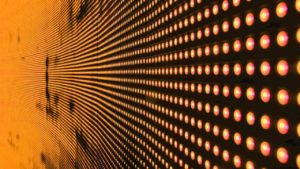Scientists from the Netherlands have developed a new type of filter based on micromechanical resonators they say is ideal for maintaining order amidst the expected future growth of frequency standards. According to researchers at the MESA+ Institute for Nanotechnology at the University of Twente, the new solution consists of two mechanical resonators that vibrate at an … [Read more...]
New Generation of PCB Insertion Loss Test Systems Introduced
Polar Instruments, a developer of signal-integrity tools for PCB design, fabrication and test, announced earlier this week that its next-generation Atlas PCB insertion-loss test system will be available for preview November 12-15, 2013 at Productronica in Munich, Germany. Atlas 2014 introduces a new generation of the company’s PCB insertion-loss test systems, combining the … [Read more...]
New Tunable Dielectric Material May Push Capacitor Performance
An international team of researchers based at Cornell University in Ithaca, N.Y. has announced the creation of a new tunable dielectric material—an insulator whose ability to store electrical charge changes when a voltage is applied—they say could benefit capacitor performance in smartphones and other electronic devices. “This is a radically different material compared to what … [Read more...]
Redesign Extends Portable Antenna Test Lab Capabilities
Microwave Vision Group’s StarLab, a compact and portable multi-purpose antenna test lab, has been enhanced with new capabilities and a new design. According to the company, the StarLab has undergone a complete transformation to give it extended capabilities as well as a new look for an improved user experience. The new StarLab now covers frequency bands as low as 650MHz and up … [Read more...]
Field Strength Meter Evaluates Wind Turbine Effects on Radar Systems
German researchers have developed a device to help evaluate the potential for interference between wind turbines and radar instruments. Designed for suspension from a helicopter or small unmanned aerial vehicle (UAV), the device measures the strength of the electric field and the radar signals used in meteorology, defense or air traffic control, reports the Institution of … [Read more...]
Simulation of GHz Insertion Loss Components; Cross-Section Geometry Influence on Conductor Loss
Tracey Vincent Application Engineer, CST ABSTRACT To attain realistic estimations of simulated insertion loss, all insertion loss components need to be considered and accounted for. In particular, the dielectric and conductor loss components can require careful material parametrization in order for 3D simulated loss to be realistic. An overview of these parametrizations is … [Read more...]
Potential Impacts of Electromagnetic Weapons on the Critical Infrastructures (View from 2012)
William A. Radasky IEEE Life Fellow WHAT IS IEMI? In recent years, Hollywood has indicated that criminals and terrorists could use electromagnetic (EM) weapons to black out a portion of Las Vegas (Ocean’s 11) or take down a counter-terrorism computer center (24). Is this fact or fiction? It turns out that Hollywood in this case is leading the public and police agencies in … [Read more...]
Antenna Coupling Inside an Aircraft Using ACA Direct Method
Pascal De Resseguier, Entares Engineering, Toulouse, France Yannick Poiré and Samuel Leman, Nexio, Toulouse, France ABSTRACT A proper study of electromagnetic interferences inside an aircraft has become essential with the recent increase of electronic devices on board. Their effects on the airplane communication and electronic systems need to be considered at an early stage … [Read more...]
EMC at IC Level – Part 1: Pulse Immunity of ICs in Different Packages
Note: The below article has been translated from German and can be found in its original language in the 2011 EMC Europe Guide. Part 2 of this article can be found here. Sven König, Langer EMV-Technik GmbH, Bannewitz, Germany INTRODUCTION Nowadays, micro-controllers are omnipresent. Whether in MP3 players, mobile phones, washing machines or cars, the small controllers … [Read more...]
Distributed Decoupling Capacitor Effectiveness
The effect of connection inductance and ESL can limit the effectiveness of decoupling capacitors. Bruce Archambeault, Ph.D., IBM Research, Triangle Park, North Carolina, USA INTRODUCTION Decoupling capacitors serve two purposes. One is to provide charge to the ICs for functionality, and the second is to maintain a low impedance between power and ground-reference planes in … [Read more...]
- « Previous Page
- 1
- …
- 35
- 36
- 37
- 38
- 39
- …
- 41
- Next Page »









